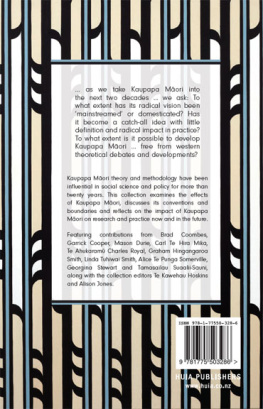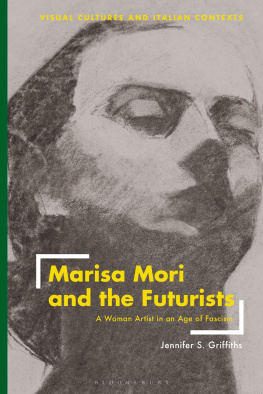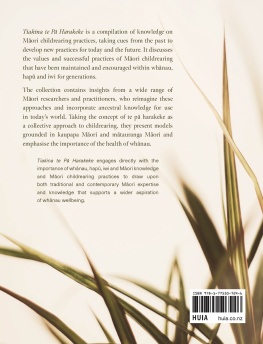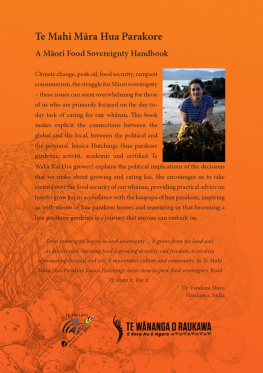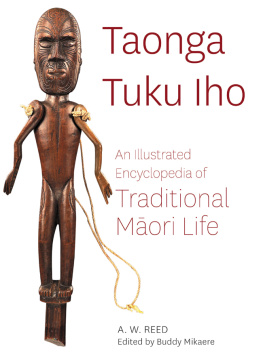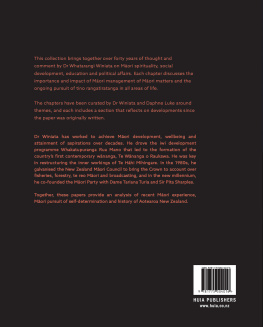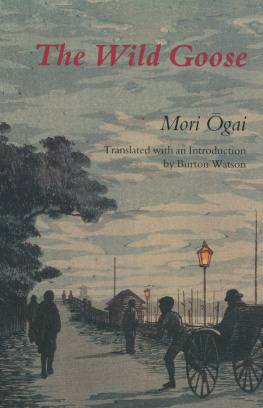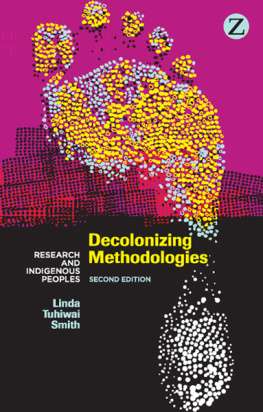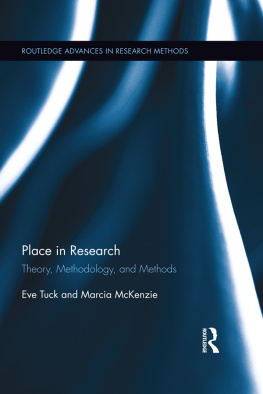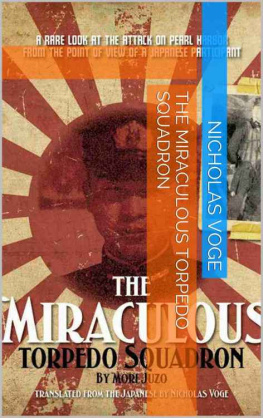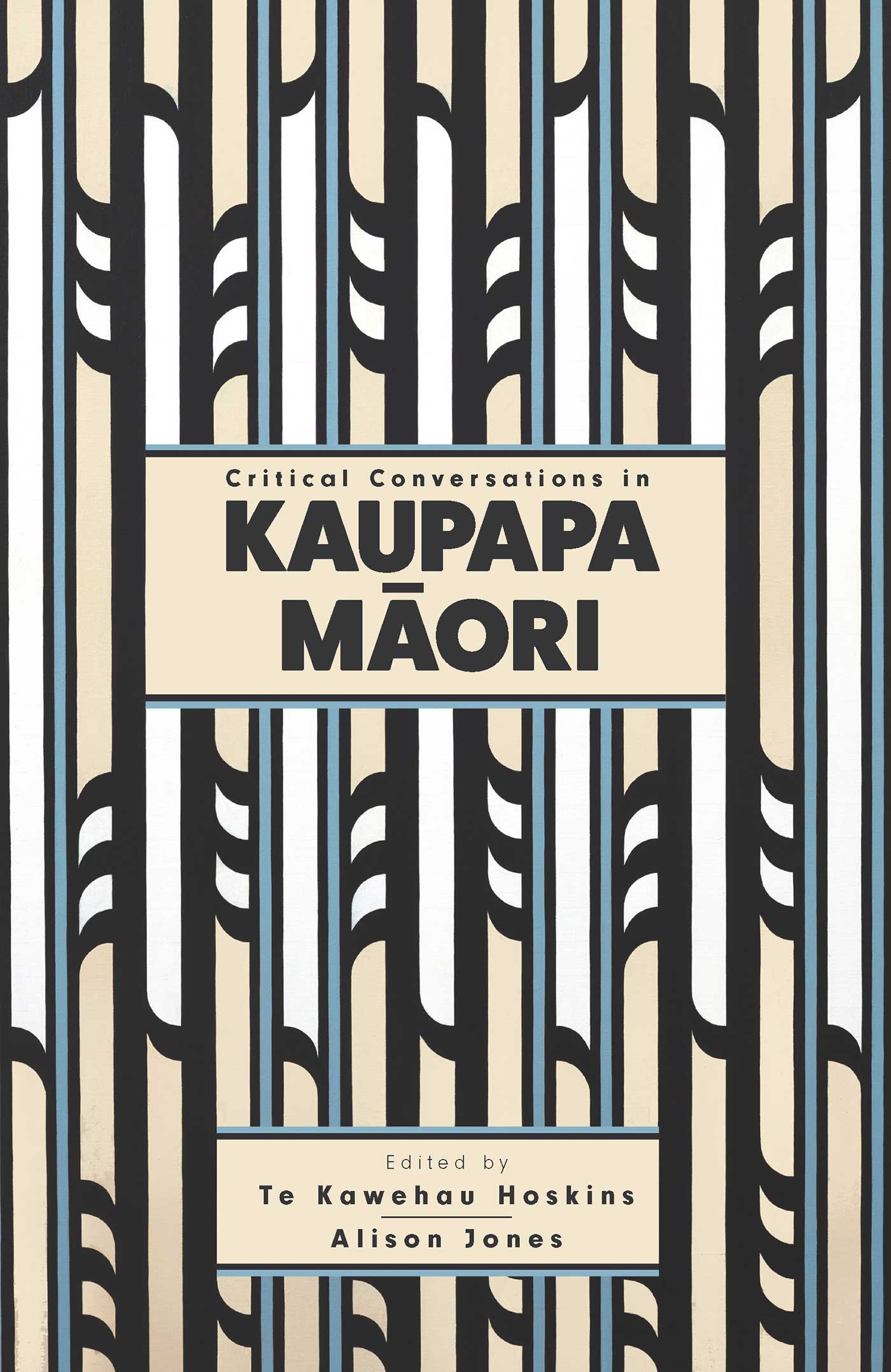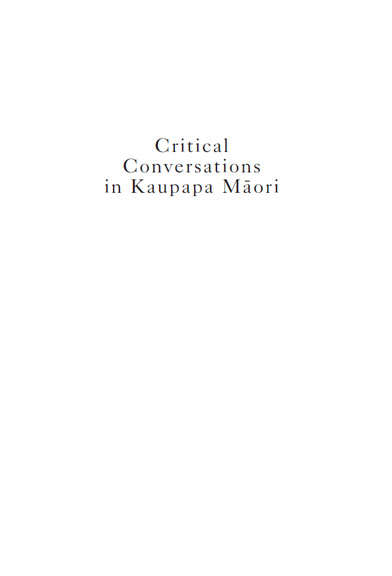This book is copyright. Apart from fair dealing for the purpose of private study, research, criticism or review, as permitted under the Copyright Act, no part may be reproduced by any process without the prior permission of the publisher.
A catalogue record for this book is available from the National Library of New Zealand.
Published with the assistance of Ng Pae o te Mramatanga; Te Puna Wnanga Mori-medium Professional Learning and Development, University of Auckland; Te Whare Kura, a Thematic Research Initiative of the University of Auckland
Kupu Whakataki
Eng mana, e ng reo, e ng karangatanga maha, te iti me te rhi, tn koutou, tn koutou, tn koutou katoa. Whiria te kaha ttinitini, whiria te kaha tmanomano.
Tn hoki ttou i ttou mate ttini, rtou huhua e takoto traha nei i runga i ttou marae, i ttou papakinga hoki. Kia tangihia, kia mihia rtou, n reira, moe mai koutou t whakaarahia. Koutou te hunga mate ki a koutou, ttou te hunga ora ki a ttou, tih mauri ora.
E rua tekau m rima tau ki muri i whakaahuatia e Graham Hingangaroa Smith me tahi atu, ng mtpono e kia nei ko Kaupapa Mori. Ko tahi o ng kaiwhakairo me ng kaikkiri o tnei kaupapa, pr i a Tuakana Nepe, kua ngaro i te tirohanga kanohi. Ahakoa t rtou wehenga atu i te ao kikokiko nei, e kore rawa rtou mahi e warewaretia e ttou ng kaikawe o te kaupapa i tnei w.
E k ana ttahi krero, ki te kore ttahi kaupapa e ngau tuartia, khore na take.
Ko t ng tuhinga kei tnei pukapuka he wnanga, he whakaaroaro hoki, i te oranga me te pakari o te ari o Kaupapa Mori i tnei w. E tirohia ana te pptanga o Kaupapa Mori i te ao mtauranga mai i tna tmatanga, , mohoa noa nei. E wetekina ana hoki tahi o ng whakaaro kua noho roa hei tpapa m Kaupapa Mori. Kei te matapaetia hoki e tahi ng ara ka takahia pea e Kaupapa Mori ng tau e heke mai nei.
Ahakoa t whakaae, kore whakaae rnei, ki tahi o ng krero kei roto i tnei tuhinga, e whakapaetia ana ka whakaohoohotia te hinengaro o te kaipnui kia whakaaro hhonutia a Kaupapa Mori.
Hmi Dale
Ngti Kur, Te Rarawa, Te Aupouri
Introduction
Critical Conversations
Te Kawehau Hoskins and Alison Jones
The term Kaupapa Mori now appears routinely in the work of researchers in the field of Mori and indigenous studies. In fact, the language of Kaupapa Mori has become so influential in a range of social policy and practice sites in Aotearoa New Zealand, from architecture to law to public health, that it has become almost an orthodoxy when Mori are involved in research and debate. A significant literature, mostly in education, has outlined the principles of Kaupapa Mori as methodological and theoretical guides to research and practice. The principles are both political and cultural, carving out a common discursive space, particularly for Mori researchers and social practitioners, to legitimately mobilise Mori concepts and practices.
This edited collection, Critical Conversations in Kaupapa Mori, continues to open out this space created over twenty years ago by Graham Hingangaroa Smiths (and others) development of Kaupapa Mori theory (see , this volume). The authors in this collection agree that, given the outstanding successes of Kaupapa Mori, the time is right to pause and examine its effects, to critically identify and discuss its conventions and boundaries, and to do this positively in order to invigorate engagement and extend its productive possibilities.
One of our motivations for developing the collection came from discussions with our students. As teachers and supervisors in the field of Mori education, we are both engaged with the development of Kaupapa Mori in educational discourse and, as researchers, we engage with it in scholarship and in community practice. Working with Kaupapa Mori ideas two decades after their initial appearance in the academy, our students increasingly seek to explore the potential of the ideas and to expand their possibilities for thought and practice. Our students are hungry for new ways to engage Kaupapa Mori, as well as to critique what they sometimes see as its limiting assumptions. As teachers of Mori students, we are keen to encourage their critical scholarship in ways that continue to make the impact that Kaupapa Mori hopes for. So this book does not simply restate key Kaupapa Mori messages but provides a collection of articles that reflect both positively and critically on Kaupapa Mori theory and methodology as it is played out in social and educational research and practice.
Self-critique of course has its risks, and has, understandably, not always been popular. As Graham Smith explains in this volume and elsewhere, Kaupapa Mori theory was initially motivated to carve out spaces in the discourses and practices of the academy as well as to provide a political critique of western academic orthodoxies. Kaupapa Mori scholarship has had to grow and defend its space against the powerful assumptions and traditions of the western academy, which still often remains suspicious towards (although, mostly, usually ignorant about) Mori critique. Therefore, Kaupapa Mori has had an ambivalent relationship with self-critique, with a tendency to reassert existing principles rather than engage in any hard self-analysis.
For the authors in this collection, opening Kaupapa Mori to responsible critical reflection, as we attempt to do here, is a risk worth taking. Indeed, we maintain it is a necessary risk in the strengthening and maturing of Kaupapa Mori theory and practice. So, in recognition of over two decades of Kaupapa Mori discourse, we ask some of the questions that have been difficult to ask.
One of those questions has been about collaboration with non-Mori. Given the strong by Mori, for Mori assertion of much Kaupapa Mori scholarship, we are aware that the editorial collaboration between a Mori and Pkeh scholar on a book about Kaupapa Mori might raise some eyebrows. Certainly, there is active opposition to any such collaboration in the more conservative sectors of Kaupapa Mori. But, as many of our contributors suggest, a confident and assertive Kaupapa Mori project led by Mori scholars can be open to a range of engagements. A conscious and careful working relationship with non-indigenous others (including non-human others!) is not ruled out by a vigorous Kaupapa Mori that has, can, and will influence thinking and practice in Aotearoa New Zealand, and elsewhere.
The chapters
Our initial foray into critical engagement in/with Kaupapa Mori theory occurred in the 2012 special issue of the New Zealand Journal of Educational Studies Te Hautaki Mtai Mtauranga o Aotearoa titled He aha te Kaupapa? Critical Conversations in Kaupapa Mori. The response to that special issue was overwhelmingly positive and we were many times asked by our students and colleagues to develop the collection as a book. We have, in fact, reprinted only two articles from the

